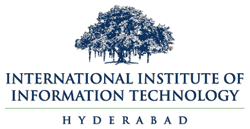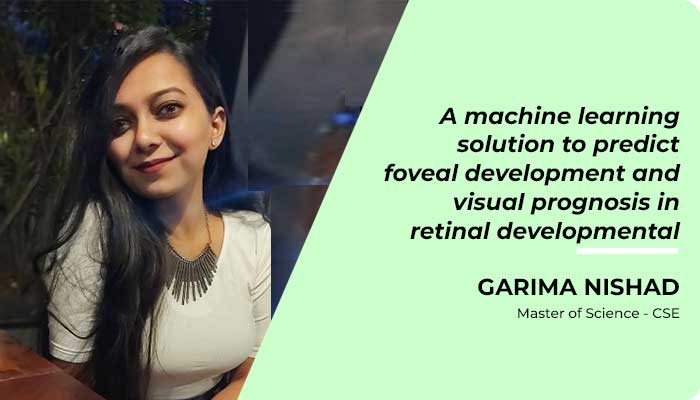Garima Nishad received her Master of Science in Computer Science and Engineering (CSE). Her research work was supervised by Dr. Girish Varma. Here’s a summary of her research work on A machine learning solution to predict foveal development and visual prognosis in retinal developmental disorders:
We design a deep learning-based AI algorithm for analysing paediatric patients’ optical coherence tomography (OCT) scans. Our system can distinguish normal from abnormal paediatric retinal OCTs in binary and six-group classification, followed by a ten layer segmentation of retinal OCT scan and nystagmus detection by performing gaze tracking.
Our AI system successfully differentiated normal and abnormal scans with 97.68 % accuracy. Furthermore, the six-point classification system (normal, grade 1-4 FH and atypical FH) achieved a 93.54 % validation accuracy. We have demonstrated the use of AI in classifying paediatric OCT, which can help in the automated diagnosis of abnormal retinal development like Nystagmus at an early age.
To extend our work, we introduce segmentation of the ten retinal layers of the central scan. Since individual layer thinning or thickening may be markers of retinal disorders or precursors to future visual loss; hence segmenting individual layers and location-specific measuring their thicknesses is critical in therapeutic practice. By implementing the state of the art DeepLabV3 model, we aim to achieve fully automated segmentation of each of the ten layers of retinal OCT scan. We use the ten carefully segmented ground truth data of the patients, including left and right eyes. We determine regional thickness, brightness, or texture-based indices of individual layers by retinal layers segmentation. Layer segmentation contributes to our understanding of retinal or optic nerve head (ONH) disease processes and is used to assess disease status, treatment responses, and visual function, among many others.
Our Gaze Tracking model helps with nystagmus waveform generation. Nystagmus is characterised by rhythmic, abnormal eye movements that begin with a ”slow” movement that moves the eye away from the target and ends with a second movement that returns the eye to the target. Horizontal, vertical, torsional, or a mixture of these movements can be present. Hence to tackle such a problem with machine learning, we design an algorithm that could replace the Gold standard Eyelink II that is used to get the waveform for Nystagmus disease. Our method can properly generate such waveforms with high accuracy. This algorithm might get extended to replace the expensive machinery used in current ophthalmology labs. The video data used to test our model has been taken via mobile phones, which further assists in replacing the need for physical presence at the clinic for the diagnosis.

